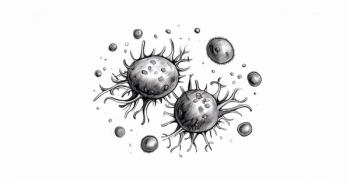
Cipriani Discusses BRAF Testing in Thyroid Cancer
Nicole A. Cipriani, explores the clinical relevance of the BRAF p.V600E mutation in papillary thyroid carcinoma and its potential role in guiding treatment decisions.
Nicole A. Cipriani, MD, surgical pathologist at the University of Chicago Medicine, explores the clinical relevance of the BRAF p.V600E mutation in papillary thyroid carcinoma (PTC) and its potential role in guiding treatment decisions.
Despite being one of the most common mutations in PTC, its prognostic value—particularly in predicting recurrence—remains controversial, according to findings published in Endocrine Pathology.1 The research evaluated data from 301 patients treated between 2018 and 2022, assessing BRAF status via immunohistochemistry and molecular testing alongside a wide range of clinicopathologic variables.
Among the study cohort, 78.7% of patients tested positive for the BRAF p.V600E mutation. The mutation was strongly associated with certain histologic subtypes of PTC: it was present in 88% of classic subtype cases, 100% of tall cell subtype cases, and 38% of those with extensive follicular growth. However, the mutation did not show any statistically significant association with tumor size or nodal disease burden.
Multivariate analysis using a Cox proportional hazards model identified 2 significant predictors of disease recurrence: large-volume lymph node metastasis and male gender. Conversely, the presence of the BRAF p.V600E mutation was not associated with increased recurrence risk (HR, 0.71, P =.4), suggesting limited utility of this marker in risk stratification for recurrence when other clinicopathologic factors are considered.
Cipriani emphasized that while BRAF immunostaining is a useful diagnostic tool, its interpretation can be challenging due to variability in tissue processing and staining quality, potentially leading to false positives or negatives. Because BRAF p.V600E is not a standalone prognostic marker, confirmation of mutation status is more relevant in cases where targeted therapies, such as BRAF inhibitors, are being considered—particularly in aggressive variants like anaplastic thyroid carcinoma.
"If you have a BRAF V600E mutation, it is papillary thyroid carcinoma. There are other BRAF mutations that are non-canonical and not necessarily as tightly associated, but the V600E—yes. So, by immunostain or by molecular testing, BRAF V600E is papillary carcinoma,” Cipriani explains. “However, the presence of that mutation should not necessarily bump the patient into an increased risk category for recurrence, according to our current understanding—so it's not an adverse prognostic indicator. However, it could be used for targeted therapy in the future if the patient needed it for clinical reasons."









































